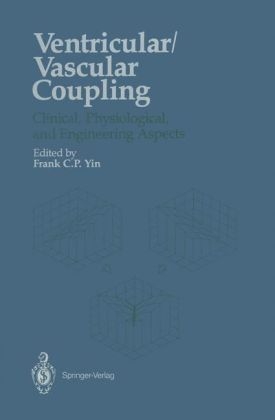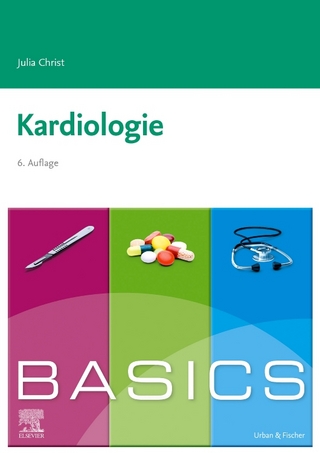
Ventricular/Vascular Coupling
Springer-Verlag New York Inc.
978-0-387-96279-5 (ISBN)
- Titel ist leider vergriffen;
keine Neuauflage - Artikel merken
Physiologists have long been interested in the interaction, or coupling, between the heart and the vasculature. The early literature consists mainly of phenomenological descriptions of cardiac alterations resulting from specific interventions in the vasculature. Hundreds of studies, for example, describe functional aspects of hypertrophied myocardium associated with the excessive vascular loading produced by various types of experimental hypertension. Recently, the concepts of ventricular/vascular interaction have found important clinical application. The widespread use of vaso- dilators and of intraaortic counterpUlsation balloons for unloading an ov- erburdened, diseased heart is a prime example. Despite the interest in this field, until as recently as 20 years ago we were not able to describe ventricular or vascular function in a framework suitable for quantitatively expressing the interaction between these two complex systems. Three major developments-description of ventricular function in terms of both the time-varying elastance and the pump function graph and quantification of vascular function in terms of impedance- have changed this.
These functional descriptions now enable systems en- gineers, bioengineers, physiologists, and clinicians to address very specific quantitative aspects of ventricular/vascular interaction and have resulted in a flurry of papers and symposia devoted to this subject.
1 Left Ventricular-Systemic Arterial Coupling in Humans and Strategies to Improve Coupling in Disease States.- 2 Influence of the Venous System on Ventricular/Arterial Coupling.- 3 The Pathophysiology of Pulmonary Vascular Disease Associated With Congenital Cardiac Lesions.- 4 Age-Related Changes in Left Ventricular/Arterial Coupling.- 5 Aging and Vascular Impedance.- 6 Arterial Reflections and Pressure Waveforms in Humans.- 7 The Control of Cardiac Output Through Coupling of Heart and Blood Vessels.- 8 Matching Between Right Ventricle and Pulmonary Bed.- 9 Heart/Arterial Coupling: How to Bypass the Aortic Valves.- 10 Ventricular Interaction With the Vascular System in Terms of Pressure-Volume Relationships.- 11 Left Ventricular Systolic Resistance and Its Role in Coupling the Ventricle to the Arterial Circulation.- 12 Influence of Extracardiac Forces on the Cardiopulmonary Unit.- 13 Sensitivity Analysis of Interaction Between the Left Ventricle and the Systemic Arteries.- 14 Modeling of the Coupling of the Left Ventricle to the Peripheral Circulation.- 15 The Effects of Finite Wave Velocity and Discrete Reflections on Ventricular Loading.- 16 Estimation of Arterial Compliance.
| Erscheint lt. Verlag | 24.10.1986 |
|---|---|
| Zusatzinfo | biography |
| Verlagsort | New York, NY |
| Sprache | englisch |
| Gewicht | 750 g |
| Themenwelt | Medizinische Fachgebiete ► Innere Medizin ► Kardiologie / Angiologie |
| Studium ► 1. Studienabschnitt (Vorklinik) ► Physiologie | |
| Naturwissenschaften ► Biologie ► Humanbiologie | |
| Naturwissenschaften ► Biologie ► Zoologie | |
| Naturwissenschaften ► Physik / Astronomie ► Angewandte Physik | |
| ISBN-10 | 0-387-96279-4 / 0387962794 |
| ISBN-13 | 978-0-387-96279-5 / 9780387962795 |
| Zustand | Neuware |
| Haben Sie eine Frage zum Produkt? |
aus dem Bereich


